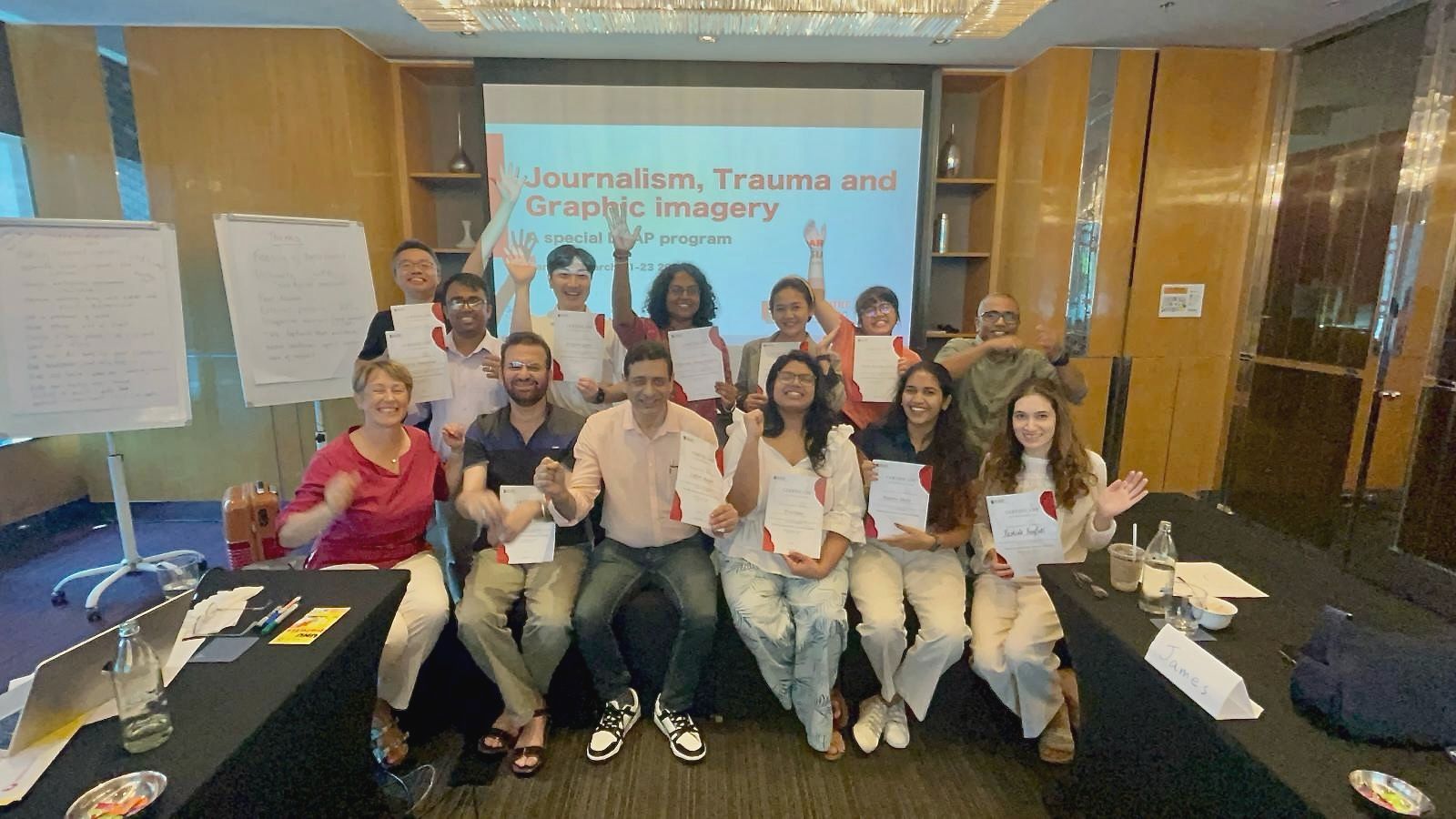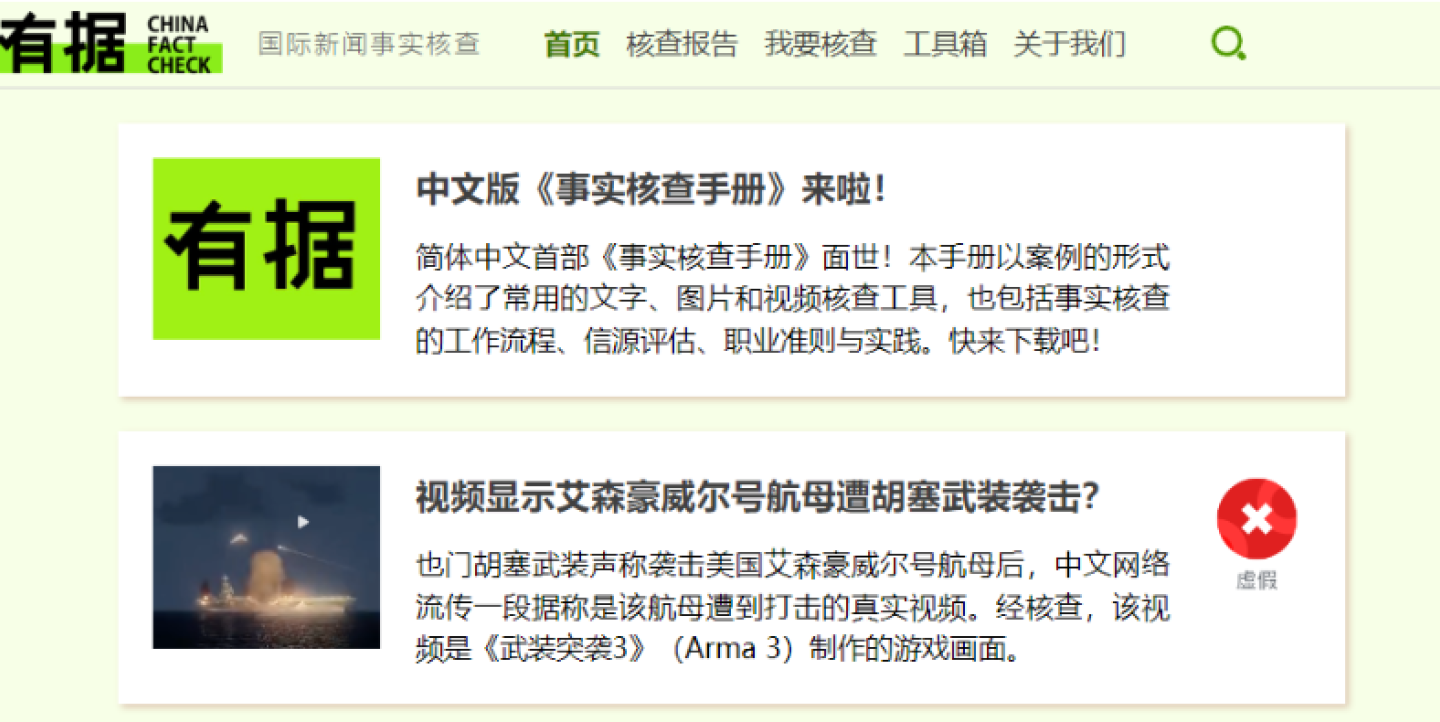False information is especially widespread in China due to government censorship, the country’s pervasive Great Firewall, the lack of safeguards against misinformation among Chinese social media platforms, and a lack of trust in media among the public.
Fact-checking, as a result, has never been more necessary than it is today. But despite an upsurge globally in such efforts, independent fact-checking initiatives in China are nearly non-existent.
Today, fact-checking in the country is carried out predominantly by the government through an initiative known locally as “piyao” which primarily targets rumors deemed unfavorable by authorities. The mis- and disinformation debunked by piyao tends to be content that authorities believe may affect social stability and order, and focuses largely on domestic issues.
While some of these efforts have yielded positive results, especially in the case of health-related misinformation, government involvement raises concerns about conflicts of interest and the government’s appropriation of the process for its own objectives. Additionally, government-led fact-checking efforts have been criticized for failing to adhere to internationally recognized standards.
It’s not easy for non-government entities to carry out verification efforts. Registering an NGO or a fact-checking initiative is nearly impossible, and few commercial media outlets in China are willing to host such projects due to political risk and little to no financial upside. Meanwhile, unlike their international counterparts, Chinese tech platforms do not fund third-party fact-checking initiatives.
As the former editor-in-chief of Sixth Tone with 20 years of experience working in Chinese media, I recognized that traditional fact-checking approaches – in which a small team of professionals meticulously investigate individual claims – were inadequate for handling the overwhelming volume of misinformation flooding Chinese social media.
That’s why I founded China Fact Check in 2020, to break the mold by trying something new.
The need for independent fact-checking enterprises in China
The idea behind China Fact Check was to create a team of volunteers to fact-check international news online, and provide Chinese audiences with accurate information about the outside world.
At first, our volunteers were mainly journalism students poised to become reporters and editors. As they would go on to take up the mission of informing the public, it was critical, I recognized, to help these students improve their media literacy and develop their ability to assess the trustworthiness of different sources in their reporting. With an innate understanding of the internet and proficiency in foreign languages, these students became incredibly effective volunteers.

Wei Xing (back, first from left) participated in a three-day workshop on trauma, journalism and graphic imagery in Bangkok, Thailand, organized by the Dart Center Asia Pacific in March. He was joined by a dozen content editors, creators and fact-checkers from across the region. Credit: Dart Center Asia Pacific
Unlike crowded-sourced fact-checking like the annotation feature introduced by Weibo in 2023, I enlisted a group of volunteer veteran reporters and editors to run a virtual editorial committee as a way to ensure high standards and quality. We also trained the student volunteers in journalistic ethics and the latest digital tools to verify texts, images and videos.
Without adherence to standards, fact-checking can quickly lose audience trust and, even worse, be hijacked and weaponized.
How we operate
China Fact Check operates exclusively through a chat group on WeChat, China’s most popular social media app. In the chat group, volunteers submit suspicious claims they find online – at times hundreds of them, far more than a traditional newsroom can handle.
Our editorial board evaluates the claims and then assigns the most viral or publicly significant posts to available volunteers to fact-check. Operating entirely remotely also meant that we could work without interruption during China’s strict COVID lockdowns.
After volunteers complete the first draft of a fact-check, editorial board members review the report and provide comments, corrections or additional sources. The report is then published and distributed. Outstanding volunteers can take on additional roles training new recruits and/or reviewing content before publication.
This model was successfully tested during the full-scale Russian invasion of Ukraine in late February of 2022. The challenge was immense: how to fact-check the massive amount of misinformation related to the war under tight deadlines, intense censorship, and within a domestic public discourse that was largely pro-Russian?
Our model allowed us to take the following steps:
- Address language barriers: In addition to the two Russian-speaking volunteers we already had, we quickly recruited more Russian- and Ukrainian-speaking volunteers to help cross-check information against original sources in their languages. This enabled us to operate more efficiently and better avoid language-based errors.
- Maintain 24-hour fact-checking operations: By mobilizing volunteers based in different time zones, including those in the U.S. and Europe, we ensured continuous monitoring of information circulating on the internet.
- Engage with followers in real-time: We assigned more volunteers to interact directly with the public and answer their questions. Many people submitted claims they found questionable, which allowed us to address false information more promptly.
- Enhance public media literacy: Our volunteers hosted free online workshops to explain patterns and narratives of wartime mis- and disinformation, and how to identify them.
In the first months of the war, we published nearly 200 fact-checks, garnering nearly 50 million views across major Chinese online platforms.
A surge of requests from interested volunteers followed, and in turn, our team was able to expand to include web developers, bioengineers, doctors, and more.
Challenges we face, and how we grow from them
Almost 200 volunteers have participated to varying degrees in our projects. Their dedication enables us to remain operational without external funding, keeping the project non-profit.
While a volunteer-based model is often seen as unstable, we are able to maintain stability for fixed periods and then rotate volunteers according to their schedules. This approach also allows us to stay flexible and resilient under political pressure.
However, this model also presents unique challenges. One major concern is creating a safe digital work environment to minimize potential trauma for our volunteers.
To address this, we plan to study and share guidance and best practices from professional organizations, such as resources from Dart Center Asia Pacific on handling traumatic imagery. We also aim to arrange more offline gatherings for volunteers and build a sense of community – perhaps even organizing a soccer match!
Finally, we make sure to keep in touch with former volunteers, even after they leave our team.
Nurturing home-grown fact-checkers
Our volunteers aren’t just arbiters of facts; they also act as fact-checking “ambassadors” in their communities. Their familiarity with the information consumption habits of the audiences in their respective communities allows us to push content directly to them instead of waiting for audiences to come to us.
What I find particularly rewarding is that many former volunteers have since become proud fact-checking influencers within their social circles. We also encourage them to leverage their experience and capabilities to develop localized media literacy training programs and provide the necessary resources – from presentation templates and fact-checking case studies to little gift rewards – to support their efforts.
One such example is the comprehensive fact-checking handbook we published recently, the first of its kind in Simplified Chinese. Our volunteers helped distribute the handbook and adapt its content into various formats to reach broader audiences.
Through our group of well-trained, decentralized fact-checkers who are committed to disseminating verified content, building skills, and amplifying the reach of their work both on and offline, I believe we are igniting a curiosity for facts and truth among more people in China.
A single spark can start a prairie fire, after all.
Photo courtesy of Wei Xing.


